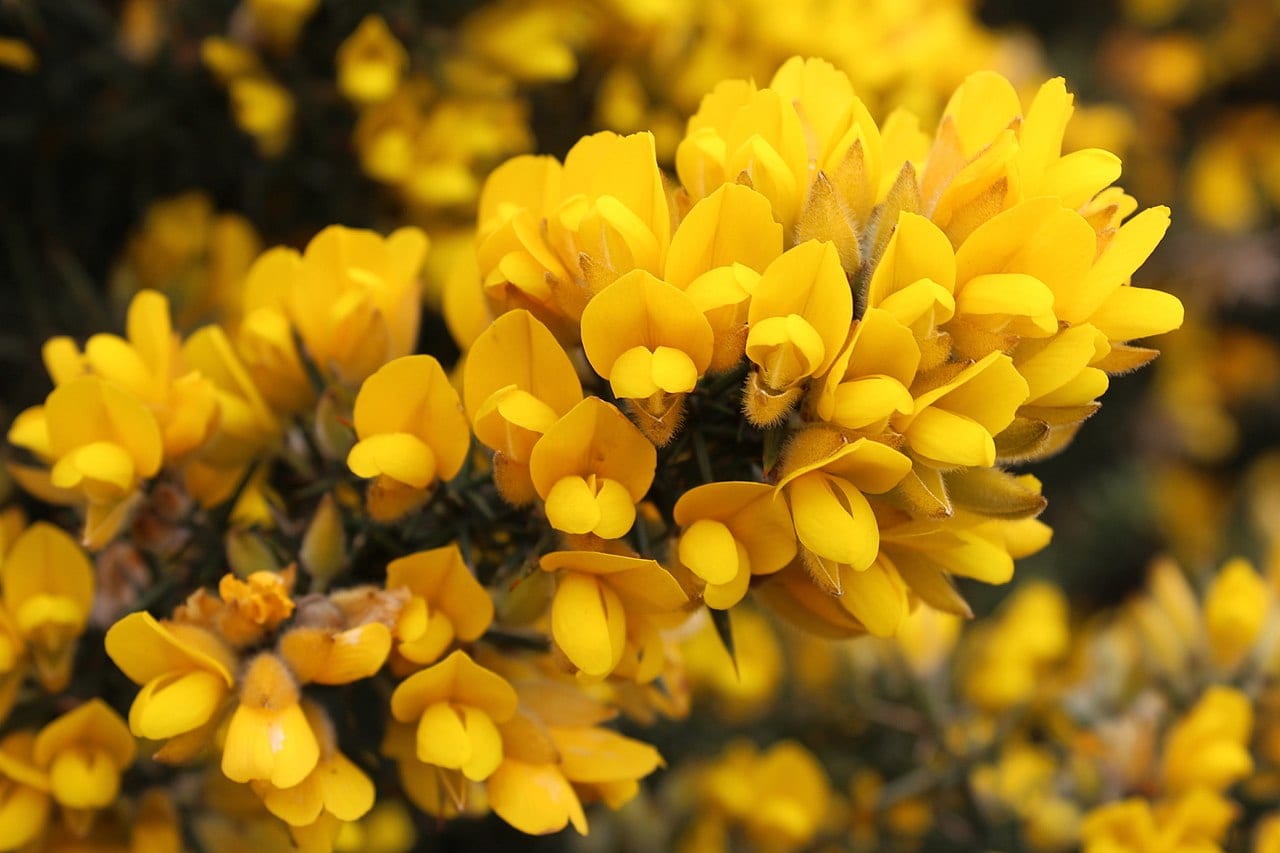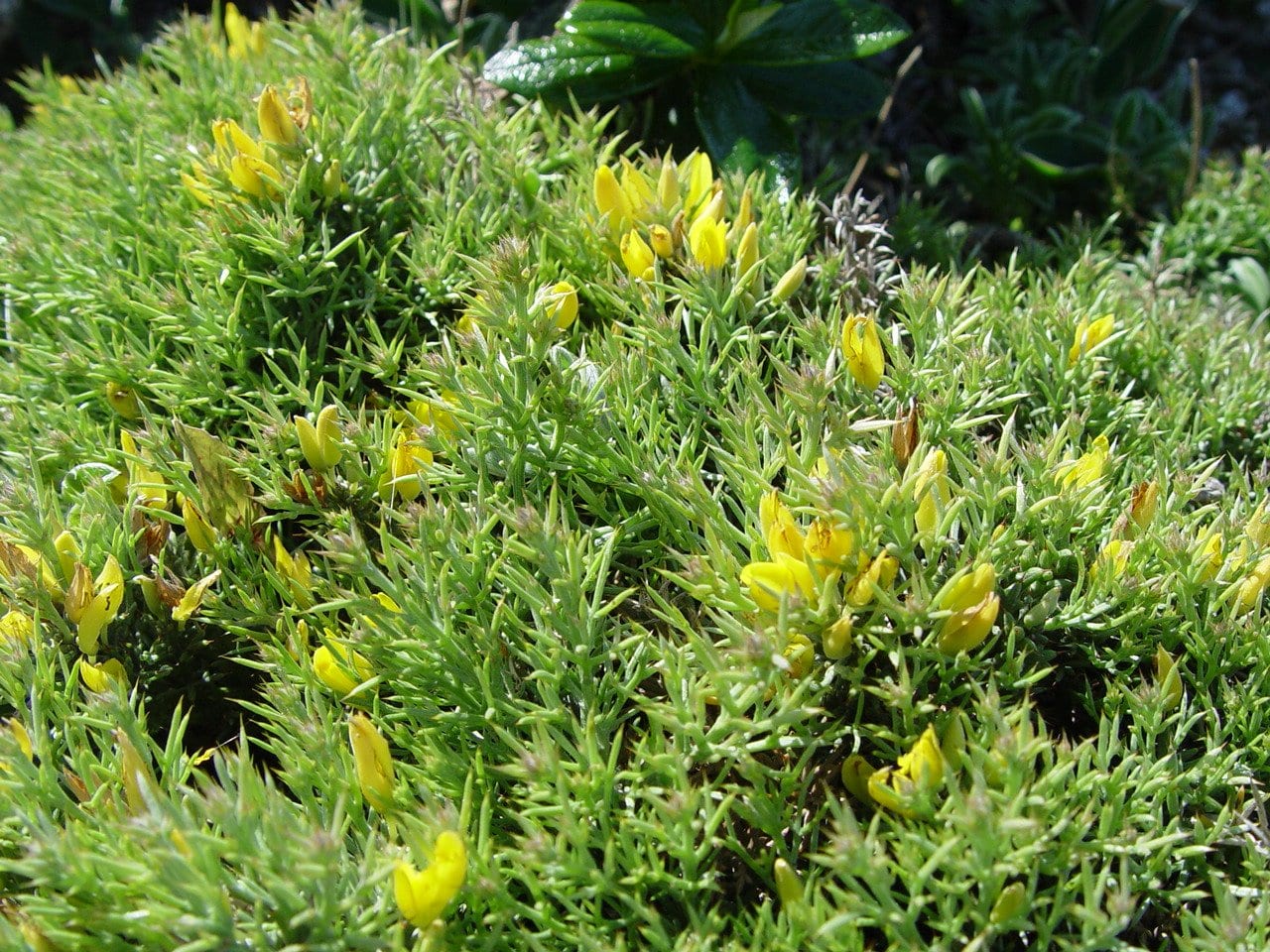
Image - Wikimedia / PaleCloudedWhite
The Furze They are shrubs that produce very beautiful flowers as you can see in the image, which depending on the species can withstand intense frosts, and which, in addition, their cultivation in pots is really simple since they do not exceed three meters in height.
So, taking all this into account, what are you waiting for to get one? If you need to know them better, then I will introduce them to you 🙂.
Origin and characteristics of the Ulex

Ulex australis / Image - Wikimedia / Xemenendura
With the term Ulex we refer to a genre of nails 20 species of evergreen and thorny shrubs native to western Europe and Africa, being especially common in the Iberian Peninsula. They are known by the popular name of gorse or gorse, and are plants that reach a height of 0 to 50 meters.
They are plants that branch a lot close to the ground; in fact, it is normal for them to acquire a dense, wide but low crown. The leaves are composed of greenish leaflets. The flowers are yellow and bloom from fall to spring. The fruit is a legume inside which are rounded seeds with a leathery texture.
Main species
Ulex europaeus

Image - Flickr / Arthur Chapman
Known as thorny broom, espinillo, argoma, chacay or gorse, it is a thorny shrub native to Europe that grows up to 4 meters high. Its leaves are trifoliate, green in color. And it produces yellow flowers.

Ulex parviflorus / Ulex baeticus

Image - Wikimedia / Lumbar ~ commonswiki
Known as gorse, argoma, gorse or gorse, it is a thorny shrub native to the Western Mediterranean. It grows up to 2 meters in height, and it is curious because it does not have leaves, if not greenish spines that are responsible for photosynthesis. It blooms in winter, and its flowers are yellow.
Its current scientific name is Ulex parviflorus, but is accepted as a synonym Ulex baeticus.

ulex minor

Image - Wikimedia / Daniel VILLAFRUELA
Known as dwarf gorse, gorse or ercajo, it is a thorny shrub native to Portugal, Spain, France and Great Britain that reaches a height of 2 meters. The leaves are uni or trifoliate, alternate and green. Its flowers are yellow.
ulex gallii

It is a shrub native to the Atlantic coasts of Western Europe that grows up to 50 centimeters tall, although it can reach 2 meters. The leaves are trifoliate, but it is common for them to turn into thorns as the plant ages. The flowers are yellow and bloom in late summer and fall.
What are their cares?
If you want to have a copy of gorse, we recommend providing the following care:
Location
In order for you to be healthy, it is very important that be outside, in full sun. Ulex are sun lovers, to the point that they can have serious developmental problems if they are placed in semi-shade.
Earth
- Flower pot: advisable to mix substrate for acidic plants (on sale here) with 30% clay (for sale here), perlite or similar.
- Garden: they grow in soils with good drainage, preferably acidic (pH between 5 to 6.5). If yours is neutral or alkaline (pH 7 or higher), make a hole of at least 50 x 50cm, cover its sides with shading mesh and fill it with the substrate mentioned above.
Irrigation

Ulex cantabricus // Image - Flickr / M. Martin Vicente
Moderate to low. Water an average of twice a week in the middle of summer, and weekly the rest of the year using rainwater whenever possible, or without lime.
Subscriber
From early spring to late summer It is highly advisable to pay it from time to time, every 15 days or so. You can use any compost, compost or organic, but I advise you to use fertilizers for acid plants once a month (for sale here). In this way, your Ulex will have all the nutrients it needs.
Planting or transplanting time
In spring, when the minimum temperature stays above 13-15 degrees Celsius.
Pruning
After flowering you can cut off all the dry branches, those that are broken and those that you see are weak. It is also a good time to trim those that are too long, in order to keep it more or less compact and defined.
Plagues and diseases
It's very tough, but be careful with overwatering, otherwise fungi such as phytophthora could cause irreversible damage to its roots.
Multiplication

By seeds in spring. To ensure that they germinate well and quickly, it is advisable to place them for a second in a glass of boiling water (or almost 😉) and immediately after 24 hours in another glass with water at room temperature. It must be done with the help of a strainer to avoid damage.
After that time, they are sown in pots or seedling trays with substrate for seedlings (for sale here), keeping them as far apart from each other as possible, and placing them outside.
Keeping the soil moist, they will germinate in about two weeks.
Rusticity
It depends on the species, but in general they resist up to -10ºC. If you have questions about any specific one, contact us 🙂.
What uses are they given?
Gorse are very decorative plants, which can be grown in pots or gardens. They are excellent covers and grow well in poor soils, so they are planted in areas where other plants could not survive.
But yes: you should know that they are pyrophytic plants; In other words, in high fire risk areas they should NOT be used as they light up quickly.
Where to buy?
They are sold in nurseries and garden stores, or here:
No products found.